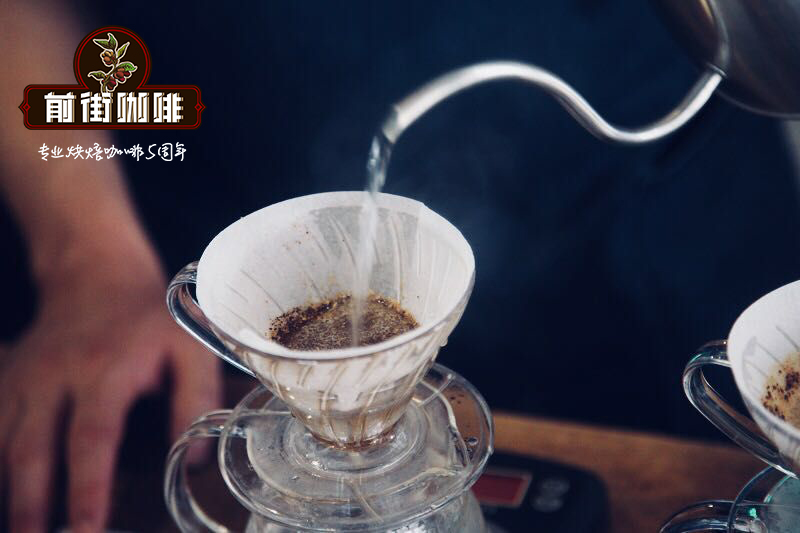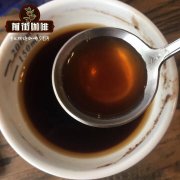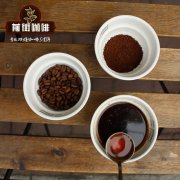Description of the flavor characteristics of Ethiopian coffee beans the difference between Essex plus Xuefei and Guji Coffee

Professional coffee knowledge exchange more coffee bean information please follow the coffee workshop (Wechat official account cafe_style)
Ethiopia is currently the largest coffee producer in Africa, but only 60% of the beans are exported, while the rest are used in various forms of ceremony. for example, at weddings, coffee beans are mixed with coffee syrup, coffee and honey, and various herbs to ward off bad luck. Thus it can be seen that coffee is an inseparable part of local life.
Ethiopia is the hometown of Arabica coffee, and it is in the forests of Kaffa that you can see wild Arabica coffee. In Ethiopian, coffee is called "Bun" or "Buna". Coffee beans (coffeebean) may be translated from "Kaffa Bun". Arabica coffee has long been found in the Harald area, probably from the Kafa forest.
Ethiopian coffee treatment method
Ethiopian coffee is mainly treated by sun and water washing, and the flavor of coffee treated by different methods is very different. generally speaking, the alcohol thickness and soil taste of washed Sidamo, Yirgacheffe and Limmu coffee are slightly lower, and the taste of sun-processed coffee is more wild. But the taste of Ethiopian coffee may be different from batch to batch, which requires more cup tests in order to find really good coffee.
Grade of Ethiopian coffee:
Ethiopia washed coffee Yega Chuefei G1 G2
The highest levels of Sidamo (Yirgacheffe, Sidamo) are level 2 and level 3 (G2, G3).
Most of the sun-processed coffee in eastern Ethiopia are grade 4 or grade 5 (G4, G5).
In many cases, level 4 coffee is marked as level 5 in order to reduce taxes. The current classification is not uniform and messy, because there are also first-and second-tier (Grand G2) Yirga Cheffe processed by tanning, but the highest level of Harald (Harar) is level four (G4).
The coffee producing areas of Ethiopia are Sidamo, Harald and Sidamo, Harrar and Yirgacheffe. Sidamo and Harrar are provinces and divisions, Sidamo is located in the south of Ethiopia bordering Kenya, and Harrar is bordering Somalia in the east of Ethiopia. Although Yirgacheffe is a community in the Sidamo region, its coffee is considered to be the best in Ethiopia because of soil composition and water content.
In the West, Ethiopian coffee is generally labeled and (Yirgacheffee, Sidamo and Harrar) sold on the market. In the field of boutique coffee, there are also five other small places of coffee, namely Lim, Gemma, Le Campdi, Becca and Limmu, Djimmah, Lekempti, Bebeka and Wolega. The most common is Essesidamo or Harald coffee (Either Sidamo or Harrar coffee).
Harald Coffee (Harrar Coffee) comes from the eastern highlands of Ethiopia, with medium bean size, green yellow, medium acidity, full alcohol thickness and typical mocha flavor (mocha flavor). It is one of the most famous coffee in the world.
Wollega (Nekempte) coffee comes from the west of Ethiopia, with medium to large beans and is famous for its fruity flavor. The color is green and brown (greenish, brownish color), and the acidity and alcohol thickness are good. Can be made to match, can also be individual products.
Limu Coffee coffee is famous for its aroma and wine taste (spicy and Winnie flavor) and is very popular in Europe and the United States. The acidity and alcohol thickness are good, and the water-washed lim coffee is also the favorite of fine coffee. The bean shape is medium, greenish blue, mostly round.
Sidamo coffee (Sidama Coffee) has medium bean shape and green gray. Hidamo washed coffee is known as sweet coffee (sweet coffee) because of its balanced taste and flavor. it has delicate acidity and good alcohol thickness. it is produced in the south of Ethiopia and can be mixed with fine products.
Yirgacheffe Coffee coffee has a strong floral flavor.
Water washing is one of the best high-estate coffee in the world, with soft acidity and rich alcohol thickness. Top and Bebeka coffee, with low acidity but high alcohol thickness, are indispensable members of the blended coffee.
Flavor characteristics of Ethiopian Coffee
Ethiopian caffeine is famous for its bright fruit and flower aromas. It usually has bright acidity, light to medium body and complex flavor.
Qianjie recommended cooking parameters:
V60ap90 ℃ / 1 15 / time two minutes
Qianjie coffee: Guangzhou bakery, the store is small but a variety of beans, you can find a variety of unknown beans, but also provide online store services. Https://shop104210103.taobao.com
Important Notice :
前街咖啡 FrontStreet Coffee has moved to new addredd:
FrontStreet Coffee Address: 315,Donghua East Road,GuangZhou
Tel:020 38364473
- Prev

What coffee producing areas are there in Ethiopia? Ethiopian Coffee beans Story
Professional coffee knowledge exchange more coffee bean information Please follow Coffee Workshop (Wechat official account cafe_style) Coffee originated in East Africa in Ethiopia, and there are as many as 5,000 wild coffee bean varieties found in the forest of the Kaffa region in the south. It is generally believed that Ethiopia is the birthplace of coffee. Local residents found that cattle and sheep grew a kind of red fruit after eating.
- Next

The method of brewing coffee beans in Caranavi coffee producing area of Karanavi, Bolivia? Bolivian.
Professional coffee knowledge exchange more coffee bean information please follow the coffee workshop (Wechat official account cafe_style) Bolivia Karanawi Caranavi coffee production area coffee bean brewing method? What are the conditions for growing coffee in Bolivia? Bolivia is one of the most difficult growing areas in the world, and transportation and climate are the biggest problems. After a special relationship of origin this year
Related
- Detailed explanation of Jadeite planting Land in Panamanian Jadeite Manor introduction to the grading system of Jadeite competitive bidding, Red bid, Green bid and Rose Summer
- Story of Coffee planting in Brenka region of Costa Rica Stonehenge Manor anaerobic heavy honey treatment of flavor mouth
- What's on the barrel of Blue Mountain Coffee beans?
- Can American coffee also pull flowers? How to use hot American style to pull out a good-looking pattern?
- Can you make a cold extract with coffee beans? What is the right proportion for cold-extracted coffee formula?
- Indonesian PWN Gold Mandrine Coffee Origin Features Flavor How to Chong? Mandolin coffee is American.
- A brief introduction to the flavor characteristics of Brazilian yellow bourbon coffee beans
- What is the effect of different water quality on the flavor of cold-extracted coffee? What kind of water is best for brewing coffee?
- Why do you think of Rose Summer whenever you mention Panamanian coffee?
- Introduction to the characteristics of authentic blue mountain coffee bean producing areas? What is the CIB Coffee Authority in Jamaica?

